If you adhere to proper nutrition, then avocados are probably in ...

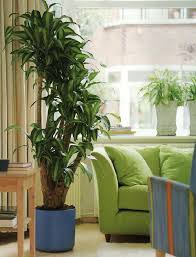
Indoor flowers not only create comfort, but also benefit. They purify indoor air from toxic substances emitted by plastic coatings, varnishes, adhesives, detergents, synthetic resins, increase air humidity, kill bacteria and reduce electromagnetic radiation. Therefore, if you want to live in a clean apartment, get a few plants, but the main thing is to choose the right ones.
The champion among flowers is chlorophytum. Several of these plants are enough to absorb the formaldehyde released by the thermal insulation from synthetic materials in the apartment medium size. Chlorophytum also has a significant bactericidal effect. Experts have found that in 24 hours this flower almost completely purifies the air of harmful microorganisms. The plant is unpretentious, although in summer it requires abundant watering. Interestingly, its cleansing properties are noticeably enhanced when placed in flower pots. Activated carbon.
Another widespread plant that releases biologically active substances that kill staphylococci and streptococci is indoor geranium. This flower is recommended to keep in the bedroom. Inhaling the beneficial compounds produced by it, a person calms down, which is very important for stress and insomnia. Geranium is widespread all over the world, and this is not surprising: the plant is unpretentious, easily propagated, and pleases the eye for a long time. beautiful flowers. The plant is photophilous, in spring and summer it requires abundant watering.
Ficus and variegated dieffenbachia also have phytoncidal properties. They clean the air living rooms from toxins, so their place is in living quarters with windows overlooking a noisy freeway or factory. In the room, these plants must be kept in a well-lit place, but not under direct sunbeams. Dieffenbachia loves intensive watering, with a lack of moisture, the plant stretches in length and discards the lower leaves, as it grows, the top needs to be pinched. Ficus, on the contrary, often drops in autumn and winter healthy leaves due to over watering. Therefore, experienced flower growers advise not to water the plant in winter, but only to spray the leaves.
Laurel is a small evergreen shrub that releases substances that kill viruses and bacteria. It is especially useful to keep this plant for people suffering from cardiovascular diseases, spasms of the intestines and biliary tract. Laurel is photophilous and grows well only in a sunny place. The plant is easy to shear, usually it is given a spherical shape.
Another group of useful volatile plants is cacti, especially those with long needles. These plants not only kill microbes, but also reduce harmful air ionization, protecting us from electromagnetic radiation. The best place for these colors - near the TV and computer monitors. For normal growth, they need a lot of heat and light.
With the help of flowers, you can achieve and increase the humidity of the air. Flowers that need a lot of moisture usually return it through the leaves. These are violets, cyclamens, ferns.
Source: Business News
ATTENTION! BEFORE USING ANY DRUG, MEDICINE OR METHOD OF TREATMENT, ALWAYS CONSULT WITH YOUR PHYSICIAN!
A few more articles from the section ""
Living in large cities, we are less and less able to take a sip fresh air, go out of town, to the village or to nature in the forest. Therefore, we try to create nature in our apartments, offices and houses.
But being carried away by this process, we should not forget that not everyone is equally useful for our body. Some flowers create a healthy and pleasant atmosphere, while some, on the contrary, cause irritation, drowsiness, allergies, migraines, and more. other.
Indoor flowers in the house play an important role in maintaining a normal indoor atmosphere. During the life of plants, a phytoncide substance is released.
Phytoncide is a biologically active substance that not only inhibits the growth of bacteria, but also kills them and various simple microscopic fungi.
Houseplants purify the polluted air that comes to us from the street. They also absorb substances that are excreted New furniture, glue and chipboard.
Sometimes people plant flowers for happiness in the house. For example:
Choosing indoor flowers for the interior of the room is not a very difficult task. The main goal of this lesson is to create completeness and brevity of the interior and, at the same time, bring a touch of charm and sophistication. The main criteria for the selection of plants are the appearance, height and flowering period.
Flowers in the house of various styles: 
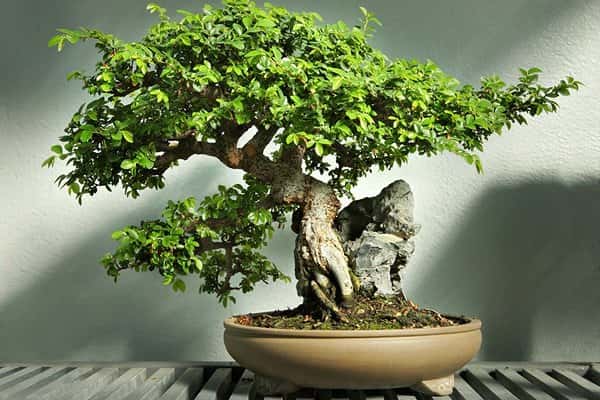
To create a more coherent combination with plants, it is necessary to place them correctly, taking into account the need for free space, absorption of light and humidity.
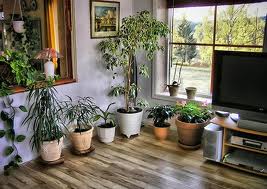 Among the many plants that we are used to seeing on our windows, there are those that can be harmful, so choose flowers with care, and consider the presence of animals in the house. But do not panic and throw away the flowers. You just need to understand what exactly is dangerous in the plant, and put them where there is no direct access.
Among the many plants that we are used to seeing on our windows, there are those that can be harmful, so choose flowers with care, and consider the presence of animals in the house. But do not panic and throw away the flowers. You just need to understand what exactly is dangerous in the plant, and put them where there is no direct access.
All dangerous houseplants can be represented as three groups: slightly toxic, poisonous and deadly.
The first includes plants in which, as a rule, pollen or juice is harmful. These waste products can cause headaches, vomiting, or indigestion. These include kalanchoe, geranium, aloe, and also nerine. But if these plants are used correctly, they are medicinal and very useful.
The second includes representatives of the domestic flora, which can cause quite severe harm to health, for example, severe dizziness, abdominal upset, loss of consciousness, allergic reactions and burns. Contact with mucous membranes may cause respiratory problems. These plants include lily, azalea, dieffenbachia, anthurium and spathiphyllum.
The third - include indoor flowers, which can cause harm, both with any part of it, and with waste products. For example, if juice enters the body with food, severe poisoning will occur. Particularly dangerous in the plants of this group is the milky juice, which leads to hallucinations, diarrhea with blood, and breathing problems, up to and including stopping. Such dangerous plants include allamanda, plumerib, oleander, carissa, etc.
Of course, it's up to you to decide what should be. But before you buy a particular plant, read the information about it, and then you can avoid various health troubles for your family members.
You may be interested in the conditions of your apartment.
> Why do we need houseplants?
Indoor plants greatly decorate living spaces, making them green and enriching them with their lush foliage. Although the foliage indoor plants not necessarily lush, they can please the eye and just original way flowering or branch growth, or the original color of the leaves, and may be thorns or the absence of any foliage at all, but the presence of an interesting, unusual bare stem. It's nice to be in a room where there are a lot of indoor flowers, especially when you look out into the street, and there are flying snowflakes and a thick layer of snow lies, and at that time you are surrounded by lush green jungle vegetation. Indoor plants greatly diversify the leisure time of people who are very fond of indoor flowers and enjoy the process of caring for them, and also provide an opportunity for free creativity, for example, to create whole plants in pots. flower arrangements by combining different varieties of plants.
What plants can be considered domestic?Indoor ornamental plants can be considered those plants that can only live at room temperature. Indoor plants differ significantly from each other not only in the way of care, but also appearance. For example, plants that hang from a pot are called ampelous, such are tradescantia and chlorophytum, stonecrop and saxifrage. And there are also climbing or creeping plants called vines, just like in the jungle. Moreover, each creeper differs from each other in the ways of “crawling”, for example, some creepers wrap around some support, others reach for the light with their antennae, and third creepers rely on tree branches. Of the domestic vines, the most famous is scindapsus. From indoor plants, succulents are also known, which have fleshy succulent leaves, for example, agave, agave, crassula. But among indoor plants there are bushes and trees, for example, ficus, hibiscus. Popular houseplants are begonia, poison dieffenbachia, coleus blume, which is often called "multi-colored nettle", nephrolepis, ivy, tradescantia, fuchsia and many others.
When did house plants appear?Already in ancient times, people had an interest in plants from other countries, and they even brought seeds, seedlings, tubers and tried to breed various exotic plants at home. A long time ago, the Egyptian queen Hatsheptus sent an entire expedition to Africa, to the country of Punt, for tree seedlings from which various incense could be obtained. What about Ancient Greece, then there medicinal plants, brought from other countries of the world, were grown in the Medical Gardens. The Greek scientist Theophrastus, a student of the great Aristotle, had such a garden. He was the first to grow hyacinths, daffodils, crocuses and double roses in his garden. And the founder of the first botanical garden is the Italian professor Luca Ghini, who collected his first collection of alpine plants.
Which home plant the most unpretentious?Some plants, such as aspidistra or antarctic cissus, grow even in poorly lit rooms. But sansevieria or cacti and other succulents tolerate prolonged drying of an earthen coma, that is, they can not be watered for a long time. Clivia and Sparmania do not require special care, and they can even bloom once a year. Unpretentious flowers are impatiens, and primrose, and geranium, and spurge, and cyperus, and bilbergia, and white perone. Easy and unpretentious to grow and some tree-like houseplants, such as monstera, Benjamin's ficus and spartmania. Popular undemanding plants asparagus, some types of begonias, dracaena, coleus, arrowroot, nephrolepis, tradescantia, etc. stand out.
What plants are dangerous to keep at home?It is dangerous to keep ficuses at home, because their milky juice, evaporating, enters the air as microscopic droplets through the stomata of the leaves and can provoke allergic reactions. An allergy can also be caused by a houseplant such as primrose, which causes irritation or inflammation of the skin, but with all this, the primrose is not poisonous. decorative pepper and other nightshades, which have fairly bright berries, can also be very dangerous, especially if, for example, Small child wants to try them, after which he will begin to feel nausea, vomiting, pain, and then drowsiness and dilated pupils. Azalea and hydrangea stems and leaves are poisonous. Leaves and flowers, such as hydrangeas, contain a mixture that contains cyanide, which exerts its effect when it comes into contact with water or saliva. But in the first place in terms of toxicity are philodendron, in which poisonous acid is contained in the leaves, and dieffenbachia, the leaves of which also contain molecules of poisonous acid that are insoluble in water. If the poisonous juice of these plants gets into the eyes, the mucous membrane is irritated, which has unpleasant consequences.
What legends are associated with house plants?There are many beliefs about the action and significance of indoor plants, but it is not known for sure whether these can be considered legends, just someone believes in them and is guided, and someone does not. So, for example, they say that plants communicate with each other or that they are able to energize. Or, if there is an ivy plant in the house, then the married couple will definitely divorce or quarrel often, and adult sons will leave or leave home. Tradescantia, asparagus and in general all climbing plants cause concern. " Money Tree"(common fat woman) brings money, and if the plant has small leaves, then only a penny will be in your pocket, and if large, then, accordingly, large bills. Agave protects against intruders and accidents. And if the ficus is in the kitchen, it will protect from poverty and hunger. The action of the cactus is also talked about interesting legends, especially about its ability to protect computers from electromagnetic radiation, and the longer its needles, the better it supposedly captures. And if you put cacti on all windows, then they will protect the house from robbers.
The role of plants for any living being is enormous. Everyone knows at least a little what plants are for. Plants are the lungs of planet Earth, they are the source of life. Plants are producers of oxygen, which is necessary for the respiration of people and animals. The plant absorbs carbon dioxide and releases vital oxygen.
Thanks to the endless cycle of everything that is in nature, people receive life-giving substances. They eat nutrient-rich plant and animal foods. People consume wild plants and agricultural products, as well as animals for which these plants are also food. A useful animal is a cow, which eats green, juicy grass in summer, and hay in winter, and provides such an important product as milk. During the processing of milk, the following are obtained: cream, sour cream, butter, cottage cheese, cheese. Dairy products are useful, especially for children, as they contain calcium and other beneficial substances. But this is not all that humans need plants for.
Plant leaves have green color, thanks to a large number a substance called chlorophyll. In autumn, when the level of chlorophyll drops, the leaf gradually begins to die, the color changes to yellow, red, brown. Chlorophyll is a source of various nutrients needed by any organism. All living things are basically built on these substances - starch, protein, sugar.
Water is the source of all living organisms on earth. Plants cannot function without water, it is necessary for the metabolic and physiological growth processes of any plant. chemical reactions in plants occur only in the presence of water in them. The process of photosynthesis takes place in the plant, that is, the formation of organic matter in a plant from water and carbon dioxide with the participation of chlorophyll. The lack of water causes the plant to concentrate all its forces on root system, nothing remains on the foliage. Therefore, any plant without getting the right amount water, gradually withers, fades away.
However, indoor plants fill the house not only with the beauty of flowers, but also have different properties. It is believed that some types of houseplants absorb negative energy helping build family relationships. If the plant is not properly cared for, then it begins to wither, and then, on the contrary, collect human energy in order to survive. People become punctual, responsible and calm when growing indoor plants, which requires constant care, patience, and time.
Some indoor plants bring peace and joy to the house, while other plants can be used in medicinal purposes with a cold or drink decoctions. In addition, indoor flowers improve the air by releasing oxygen, purify it from toxic substances, increase air humidity, reduce electromagnetic radiation, and kill bacteria.
Such a houseplant as chlorophytum has a great bactericidal effect, in 24 hours it completely cleanses the room of harmful microorganisms, activated carbon in flower pot enhances cleansing properties. Another very common plant - indoor geranium kills staphylococci and streptococci. This plant is best kept in the bedroom, it has a calming effect, helps with insomnia, stress. Ficus and variegated dieffenbachia detoxify a living space overlooking the freeway.
Cacti, especially those with long needles, kill microbes, protect against electromagnetic radiation. These flowers are best placed next to a TV or computer monitor, they require heat and light.
Indoor plants adorn window sills in many homes today.
However, beauty, as you know, requires sacrifice.
After all, flowers, like pets, need care.
OtdohniOmsk.ru understands how indoor flowers respond to our care and how long ago they entered human life.
The history of home floriculture began in ancient civilizations. During excavations in Egypt, researchers discovered ceramic flowerpots and pots, which supposedly grew indoor flowers and miniature trees. This conjecture is confirmed by the image of plants in pots on the monuments of ancient Egyptian fine art.
The ancient Greeks and Romans were also seen indoor floriculture. They decorated the temples of the gods with flowerpots with lush greenery and beautiful buds.
Evidence of a long-standing fascination with indoor plants has also been found in China. The famous art of cultivation miniature trees- bonsai - originated more than two thousand years ago. First images found dwarf trees grown in pots date back to the Han Dynasty - 200 BC. The ancient Chinese even at that time had a special word "penzai" for plants transplanted from the ground into a pot. Penzai was cultivated by Buddhist monks.

In the Middle Ages, Chinese monks brought to Japan not only Buddhism, but also the technology of growing bonsai. It was in the Land of the Rising Sun that this art was most seriously developed and reached perfection.
In Europe, greenhouses first appeared and winter gardens, and only then the habit of growing plants at home. exotic plants began to penetrate into Europe with crusades. Not all residents of warm countries could endure the relatively cold European winters, so closed heated rooms were created for them. Plants entered houses at the end of the 17th century.
Of course, in the early stages of development, indoor plants were the exclusive privilege of the rich and noble people. Only in the middle 19th century they became available to mere mortals. However, during the two world wars, people were not up to flowers. The fashion for houseplants gained serious distribution only in the middle of the last century. However, since then, home flower growing has become a favorite hobby of many people around the world.
It turns out that in addition to the aesthetic appearance, indoor plants have a number of undeniable advantages. With the help of flowers, we can not only improve the microclimate at home and enrich the air with oxygen, but also protect our fortress from various misfortunes, as well as cheer ourselves up. How is this possible? It's all about energy.
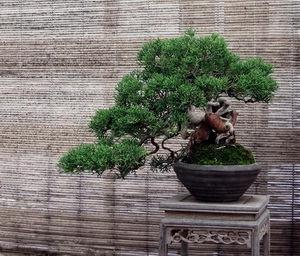
Energy, according to experts, is an integral property of any living organism. It lies in the ability to emit some wave vibrations. The waves emanating from various organisms can interact and change the state, mood and tone of these creatures.
Plant energy is very active and powerful, it represents growth, fertility and life. Therefore, any indoor flowers improve the physical and metaphysical atmosphere in your home. However, this powerful force must be used wisely. The fact is that various plants have a special energy that will be useful in some conditions and redundant in others.
Properly selected green companions will protect your home from bad luck and other misfortunes. Houseplants are excellent generators of positive vibes that stimulate brain activity, attract inspiration and allow human potential to be revealed. As for health, flowers can calm the nerves and increase vitality, as well as normalize work. of cardio-vascular system. The living energy of plants successfully suppresses the harmful radiation of various household appliances and synthetic materials.
How to get the most out of indoor plants? First of all, you need to take care of your green pets. Plants are very grateful creatures. If you love them and properly care for them, your flowers will not only please the eye with their healthy appearance, but also give some of the beneficial energy to you. In addition, you should carefully consider the choice of plants and their location in the house. Despite the energy versatility of most green neighbors, each of them has its own characteristics and the most acceptable locations.

The main life processes in plants take place in the leaves. It is these "organs" in which photosynthesis takes place that are the main emitters of healthy energy. The foliage cleans the air of carbon dioxide and enriches it with oxygen, and also produces tremendous energy.
The shape and size of the leaf can tell us what the energy emitted by the plant will be and in what cases it can be useful.
Plants that have large and wide smooth leaves, perfectly get along in any part of the house. A wide active zone allows you to quickly and efficiently clean the air and bring the energy balance of the room back to normal. They will become the key to harmony and comfort in the house.
small leaves work rather pointwise. They are great for regulating and adjusting energy pathways in a room. It is best to place small-leaved flowers at doors and windows through which energy enters the house from the outside.
spines cacti even outwardly hint at the protective function of these plants. They have enough aggressive energy that can protect your home comfort from external adverse factors. So, the very place for them is on the windowsill, closer to the window.
Spiral or twisted the shape of the leaf speaks of the dynamism of the energy of its owner. Such plants are responsible for the movement of energy in the house and do not allow it to stagnate. Spiral vibrations start the processes of renewal of vital energy. They reduce fatigue and increase vitality and vigor. The best place for such "power engineers" is the desktop. With them, you will not fall asleep over boring documents and catch a smart idea in time.
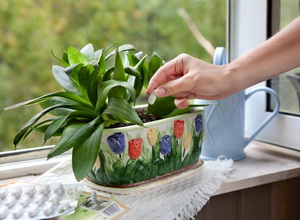
fleshy the leaves are rounded and pleasant not only in appearance. They radiate an appropriate, soft and rounded energy. Thanks to this feature, succulents are able to smooth out sharp corners in family life, create comfort in the house and contribute to material well-being.
Plants are great neighbors. Getting along with them is quite simple, and there are more than enough benefits from such a neighborhood. The main thing - do not forget to take care of your green pets, and they will reciprocate.
The material was prepared on the basis of information from open sources